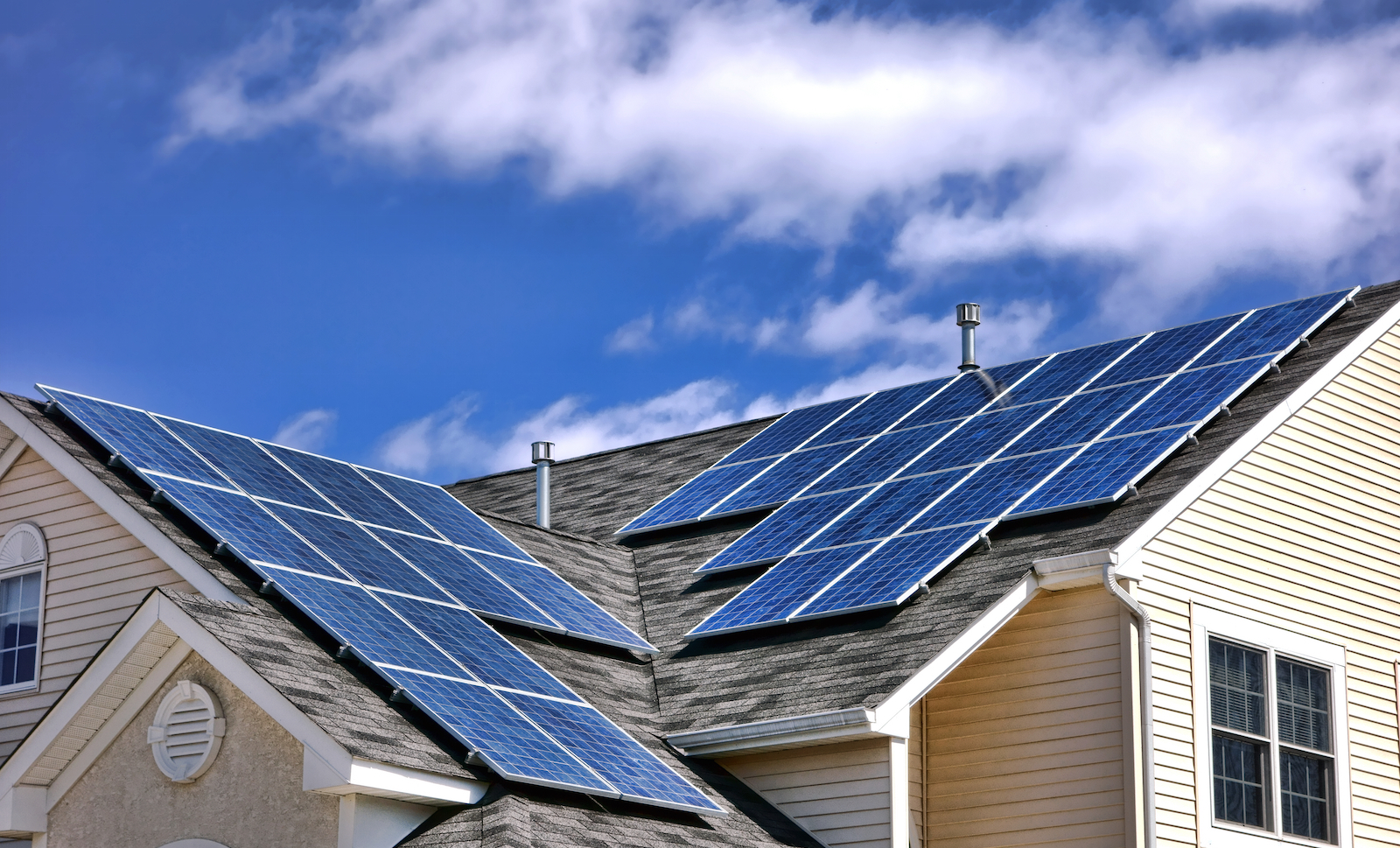
Solar on Superstores
Big Roofs, Big Potential for Renewable Energy
The rooftops of America’s big box stores and shopping centers have the potential to generate 84.4 terawatt-hours (TWh) of solar electricity each year, equivalent to the amount of electricity used by almost 8 million average U.S. homes, or more than 30,400 typical Walmart stores.
Downloads
Environment Georgia Research & Policy Center

The United States has the technical potential to produce 78 times as much electricity as it used in 2020 just with solar photovoltaic (PV) energy. In order to achieve a future of 100% clean and renewable energy, America must capitalize on every solar energy opportunity, including on the rooftops of “big box” superstores.
The flat, open, sunny roofs of giant grocery stores, retail stores and shopping malls are perfect locations for solar panels. The United States has more than 100,000 big box retail stores, supercenters, large grocery stores and malls, with almost 7.2 billion cumulative square feet of rooftop space.
The rooftops of America’s big box stores and shopping centers have the potential to generate 84.4 terawatt-hours (TWh) of solar electricity each year, equivalent to the amount of electricity used by almost 8 million average U.S. homes, or more than 30,400 typical Walmart stores.
Putting solar panels on the nation’s superstores would be good for businesses, good for electricity customers, good for the grid, and good for the environment.
-
Generating the full 84.4 TWh of clean solar power potential from America’s superstores would reduce global warming pollution by more than 52 million metric tons of CO2 annually — equivalent to taking over 11.3 million passenger vehicles off the road.
-
Big box stores and shopping centers could replace half of their annual electricity use by fully building out their rooftop solar potential.
-
Producing electricity on rooftops, close to where the electricity will be used, reduces energy losses that happen during electricity transmission and distribution — losses that made up 6% of gross electricity generation in 2020. Solar power also makes the grid more resilient to outages and disruptions.
Many big box retail stores are already reaping the benefits of installing solar power on their rooftops.
-
According to the Solar Energy Industries Association, the four companies with the most solar installed as of 2019 — Apple, Amazon, Walmart and Target — had solar installations totaling almost 1.4 gigawatts of capacity in that year. That’s more than 11% of the total commercial solar capacity installed in the U.S. as of 2019.
-
Walmart’s solar installations have already saved the company over $1 million, and its installations in California were expected to provide between 20% to 30% of each location’s electricity needs.
To combat climate change, help their communities, increase resilience and reduce energy expenses, businesses should set ambitious goals to install solar generation capacity on their facilities and invest the resources needed to meet those goals. To accelerate adoption of solar energy by America’s businesses, officials at all levels of government should implement supportive policies that streamline the permitting and installation process, remove financial barriers, and allow for non-traditional financing or partnership mechanisms.
Topics
Find Out More


Recording of Rooftop Solar on the Rise webinar

Rooftop solar on the rise


